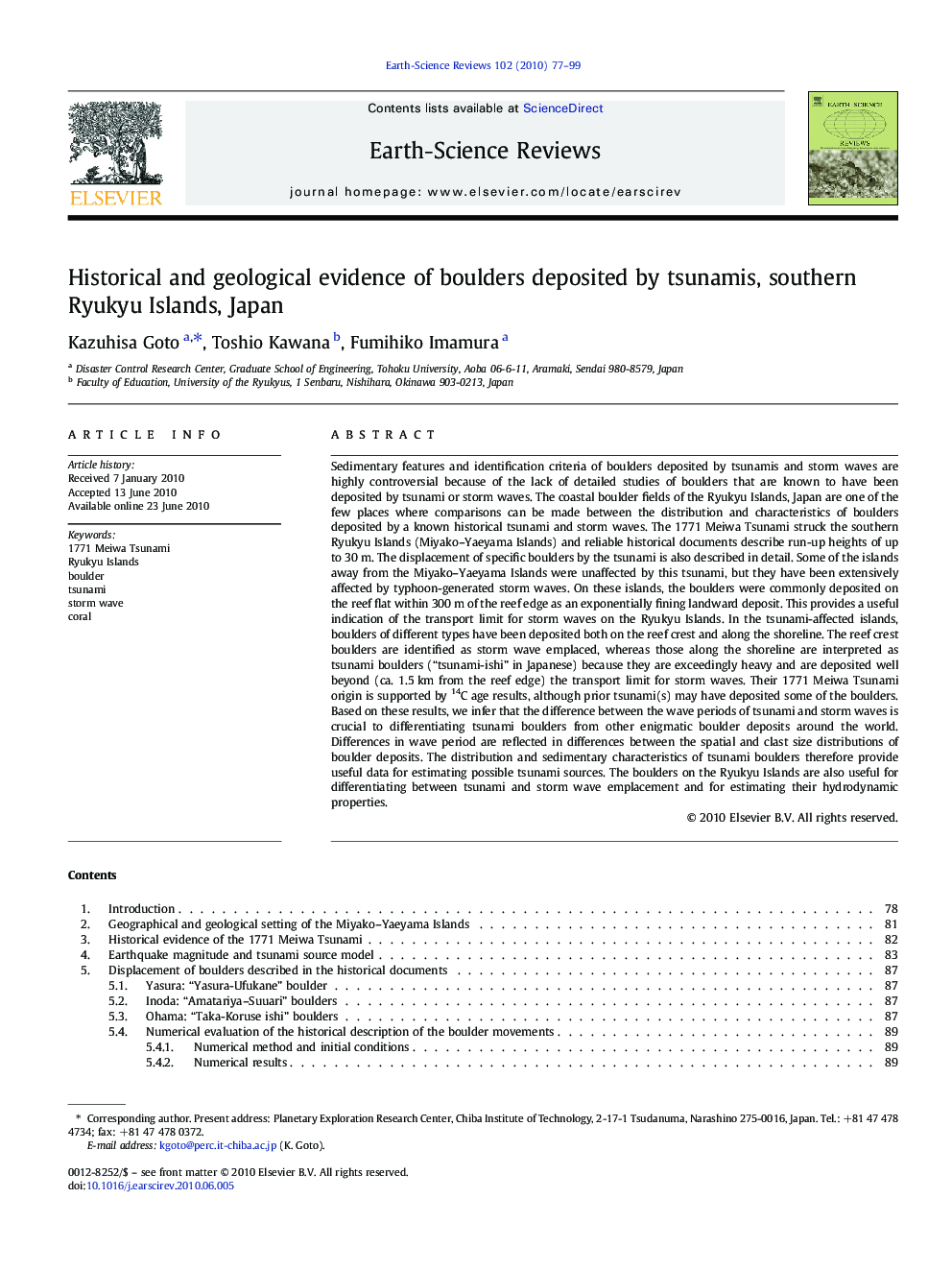| کد مقاله | کد نشریه | سال انتشار | مقاله انگلیسی | نسخه تمام متن |
|---|---|---|---|---|
| 4726094 | 1640011 | 2010 | 23 صفحه PDF | دانلود رایگان |

Sedimentary features and identification criteria of boulders deposited by tsunamis and storm waves are highly controversial because of the lack of detailed studies of boulders that are known to have been deposited by tsunami or storm waves. The coastal boulder fields of the Ryukyu Islands, Japan are one of the few places where comparisons can be made between the distribution and characteristics of boulders deposited by a known historical tsunami and storm waves. The 1771 Meiwa Tsunami struck the southern Ryukyu Islands (Miyako–Yaeyama Islands) and reliable historical documents describe run-up heights of up to 30 m. The displacement of specific boulders by the tsunami is also described in detail. Some of the islands away from the Miyako–Yaeyama Islands were unaffected by this tsunami, but they have been extensively affected by typhoon-generated storm waves. On these islands, the boulders were commonly deposited on the reef flat within 300 m of the reef edge as an exponentially fining landward deposit. This provides a useful indication of the transport limit for storm waves on the Ryukyu Islands. In the tsunami-affected islands, boulders of different types have been deposited both on the reef crest and along the shoreline. The reef crest boulders are identified as storm wave emplaced, whereas those along the shoreline are interpreted as tsunami boulders (“tsunami-ishi” in Japanese) because they are exceedingly heavy and are deposited well beyond (ca. 1.5 km from the reef edge) the transport limit for storm waves. Their 1771 Meiwa Tsunami origin is supported by 14C age results, although prior tsunami(s) may have deposited some of the boulders. Based on these results, we infer that the difference between the wave periods of tsunami and storm waves is crucial to differentiating tsunami boulders from other enigmatic boulder deposits around the world. Differences in wave period are reflected in differences between the spatial and clast size distributions of boulder deposits. The distribution and sedimentary characteristics of tsunami boulders therefore provide useful data for estimating possible tsunami sources. The boulders on the Ryukyu Islands are also useful for differentiating between tsunami and storm wave emplacement and for estimating their hydrodynamic properties.
Journal: Earth-Science Reviews - Volume 102, Issues 1–2, September 2010, Pages 77–99